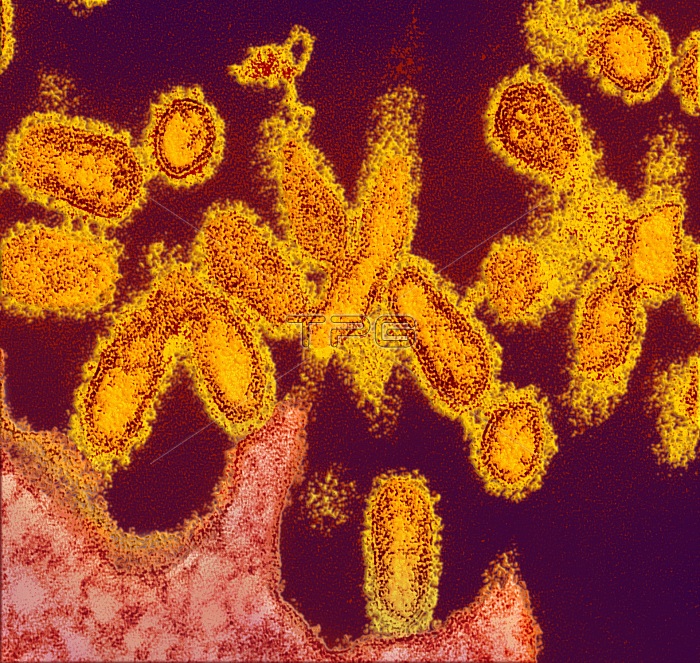
This transmission electron micrograph (TEM) of an ultra-thin specimen revealed some of the ultrastructural morphologic features seen in 1918 influenza virus virions. The prominent surface projections on the virions are composed of either the hemagglutinin, or neuraminidase type of glycoproteins. Composed of what looked like dots or tubules, was a dense envelope known as a capsid, which surrounded each virion's nucleic acid constituents. The flu is a contagious respiratory illness caused by influenza viruses. It can cause mild to severe illness, and at times can lead to death. The best way to prevent this illness is by getting a flu vaccination each fall. Every year in the United States, on average 5% to 20% of the population gets the flu; more than 200,000 people are hospitalized from flu complications, and; about 36,000 people die from flu. Some people, such as older people, young children, and people with certain health conditions, are at high risk for serious flu complications.
| px | px | dpi | = | cm | x | cm | = | MB |
Details
Creative#:
TOP22225244
Source:
達志影像
Authorization Type:
RM
Release Information:
須由TPG 完整授權
Model Release:
N/A
Property Release:
No
Right to Privacy:
No
Same folder images:

 Loading
Loading